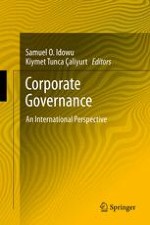2014 | OriginalPaper | Buchkapitel
12. Corporate Reputation: A Definitional Landscape
verfasst von : Melisa Erdilek Karabay
Erschienen in: Corporate Governance
Verlag: Springer Berlin Heidelberg
Aktivieren Sie unsere intelligente Suche, um passende Fachinhalte oder Patente zu finden.
Wählen Sie Textabschnitte aus um mit Künstlicher Intelligenz passenden Patente zu finden. powered by
Markieren Sie Textabschnitte, um KI-gestützt weitere passende Inhalte zu finden. powered by
